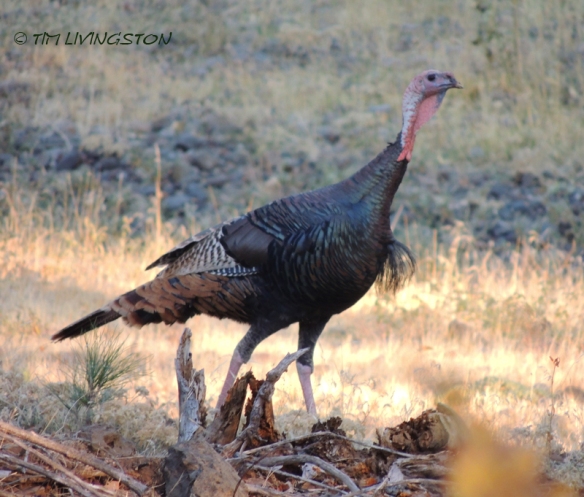We affectionately call them “Nature Nooks”, but the official name is “Habitat Retention Areas” or HRAs. Simply put, they are groups of trees left unharvested inside a logging unit. The purpose is to leave mature tree thickets that provide hiding places for wildlife and habitat for cavity dwellers like woodpeckers.
When logging has just been completed there isn’t much cover and wildlife will utilize them for a cool place to hang out.
 The openings created by logging attract animals like deer, turkeys, quail and rodents.
The openings created by logging attract animals like deer, turkeys, quail and rodents.
Often other individual wildlife trees, like these mature oaks, are left to provide perch trees and additional acorn production to feed wildlife.
We also retain snags for perchs that raptors use while hunting. Sometimes they already have woodpecker holes like this one.
I was certain Nature Nooks were a subject that Blitz could get excited about!







Tim,
Forestry Friday is a wonderful addition to your blog. It nourishes the mind, the heart, and the eye. Thank you for taking the time to put these mini lessons together each week. I look forward to Fridays more than ever.
LikeLike
Thank you Linda. You are too kind. Just let me know if I start putting you to sleep. Blitz does!
LikeLike
Great post! Glad to see some mitigation techniques of foresters. I can guess that at times your industry gets bashed for cutting trees down. I’m on the planting end, so I don’t get much flack. 🙂 it looks like it was a hard day for Blitz! I wish I could nap on the ride home from work!
LikeLike
We do get our share of criticism, but most folks like what we do if we take the time to show them and explain the process. I spent many years on the planting end also, and it was very gratifying work. Don’t let Blitz fool you she can nap at the drop of a hat!
LikeLike
Love this. The beauty you’re able to capture in these small stands of forest and the knowledge you’ve relayed that these cuts actually encourage wildlife are both encouraging. Thanks.
LikeLike
Counter to what many folks think, creating these openings provide habitat for a greater diversity of wildlife. When they are new the deer and turkeys like them. In 10 years they are full of saplings and the song birds like to nest in them. Each year as they change they favor different species of wildlife.
LikeLike
The last photo is too precious 🙂
LikeLike
That’s my girl!
LikeLike
Blitz is the star of this show, no doubt about it – got to love the comfortable environment (blanket too) he finds himself in. Enjoyed this post, was interesting about this aspect of logging.
LikeLike
Thank you Mary. Blitz is the star and she knows it!
LikeLike
Thank you for sharing, its nice to see and learn something new everyday. Trust Blitz was interested at some point. Dear dog.
LikeLike
Thank you Susan. She definitely has her fun!
LikeLike
Hi Tim, You explain forest practices very well. We call them wildlife patches here and I agree, the cutovers do greatly increase wildlife diversity. Here we get moose and deer in much greater numbers and when the young trees start growing, one of the seasonally wildlife species is human berrypickers. (I’m must admit that I’m a member of that species).
LikeLike
Thank you so much Annerose. We get a few berry-pickers around here too. Only ours are blackberries instead of blueberries.
LikeLike
Oh that Blitz reminds me more and more of Teddy Bear with every post!
LikeLike
I’m just not sure who’s in charge around here anymore…..me or her.
LikeLike
🙂 Great post, Tim.
LikeLike
Thank you so much Elena!
LikeLike
Very interesting post. Great pic of Mr. Tom Turlkey. i like this a lot. Love the photo of Blitz asleep on your sketch bool. So cute.
LikeLike
Thank you Yvonne. I’m so glad you enjoyed it. 🙂
LikeLike
Great that forestry and caring for the environment can go hand-in-hand 🙂 Funny turkey!
LikeLike
Indeed!
LikeLike
Great photos – good to see that Blitz is so appreciative 😉
LikeLike
Appreciative of a good nap! 🙂
LikeLike
I’m glad you did this post, because having moved to a place where logging is so prevalent, I’m very curious about all aspects of it. But especially things like this! So thanks!
LikeLike
You are so welcome.
LikeLike